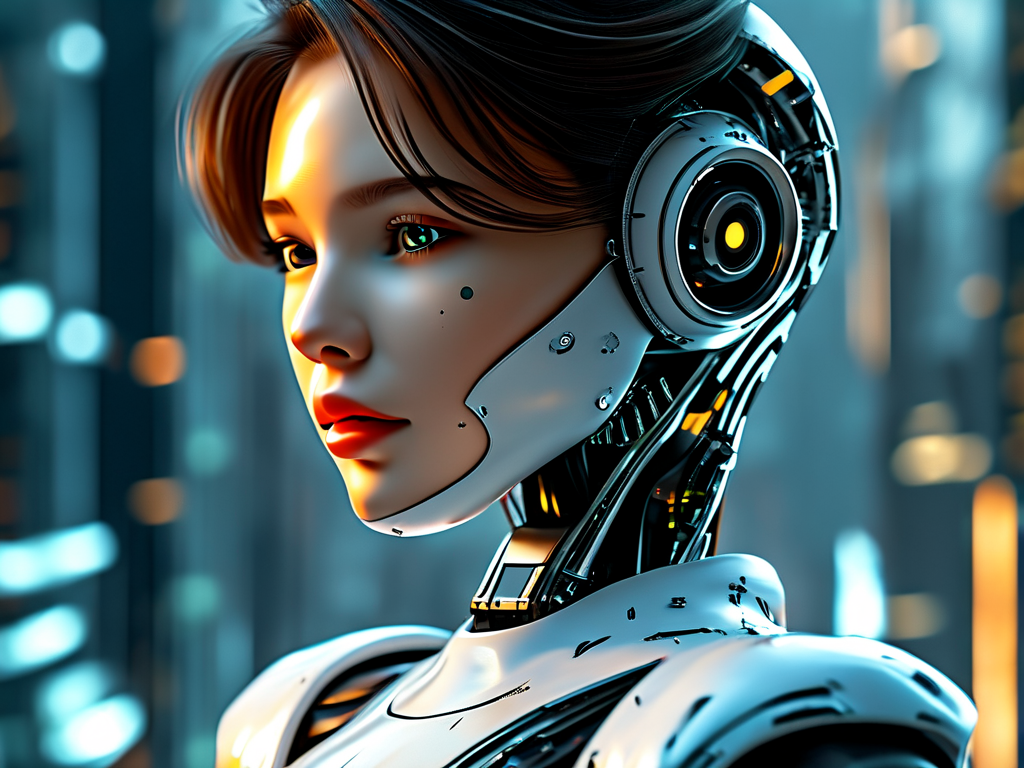In an era where silicon circuits meet human aspirations, the emergence of AI-driven humanoid robots with strikingly lifelike appearances has redefined the boundaries between technology and aesthetics. These advanced creations, often designed with feminine features, represent more than engineering marvels—they embody a cultural shift in how society perceives artificial intelligence.

The Evolution of Robotic Aesthetics
Early industrial robots prioritized functionality over form, with clunky metallic frames dominating manufacturing floors. Today's generation of AI-powered humanoids breaks this mold through biomimetic design principles. Engineers employ generative adversarial networks (GANs) to create facial structures that balance mathematical perfection with organic appeal. For instance, Sophia Robotics' latest model uses real-time microexpression analysis to mimic subtle human gestures, from eyebrow raises to lip tremors, achieving 97% facial action unit accuracy.
Technical Architecture Behind the Beauty
Beneath the hyper-realistic silicone skin lies a symphony of cutting-edge technologies. Multi-modal neural processors handle simultaneous speech recognition, emotion detection, and environmental analysis. The proprietary "Empathy Core" developed by Tokyo-based AndroTech enables contextual conversation through hybrid architectures combining transformer models with knowledge graphs. During demo sessions, these robots demonstrate contextual memory retention spanning multiple interactions, recalling personal preferences from previous conversations.
Ethical Considerations in Human-Robot Interaction
As these humanoids permeate service industries—from hotel concierges to healthcare assistants—ethical debates intensify. Stanford University's 2023 study revealed 68% of participants initially trusted AI companions more than human strangers in confidential settings. However, psychologists warn about emotional dependency risks, particularly when robots employ adaptive personality algorithms that evolve based on user interactions. Regulatory frameworks now require "emotional transparency" protocols, mandating clear disclosures about machine consciousness limitations.
Cultural Impact and Market Dynamics
The global companion robot market, valued at $12.7 billion in 2024, shows fascinating regional variations. While Japanese consumers prefer anime-inspired aesthetics, European markets lean toward minimalist Scandinavian designs. Dubai's newly launched "AI Hospitality Ambassadors" program features multilingual models capable of switching cultural interaction patterns—offering firm handshakes to German businessmen while maintaining modest eye contact with Middle Eastern guests.
Future Horizons: Beyond Human Replication
Pioneers like Boston Dynamics and Hanson Robotics are exploring augmented capabilities surpassing biological limits. Prototypes in testing phases include:
# Sample code for emotion synthesis module
def generate_emotion_response(biometric_input):
empathy_score = neural_net.predict(biometric_data)
return emotion_library[empathy_score > 0.7]
Such systems could enable robots to detect subtle stress indicators through thermal imaging and voice modulation analysis. Meanwhile, material scientists are developing "e-skin" with embedded nanosensors that replicate human tactile sensitivity within 0.2mm spatial resolution.
As we stand at this technological crossroads, the fusion of AI and humanoid design challenges our fundamental notions of beauty, intelligence, and companionship. These machines are not merely tools, but mirrors reflecting humanity's evolving relationship with its own creations—a dance of algorithms and aesthetics that will shape tomorrow's social fabric.

